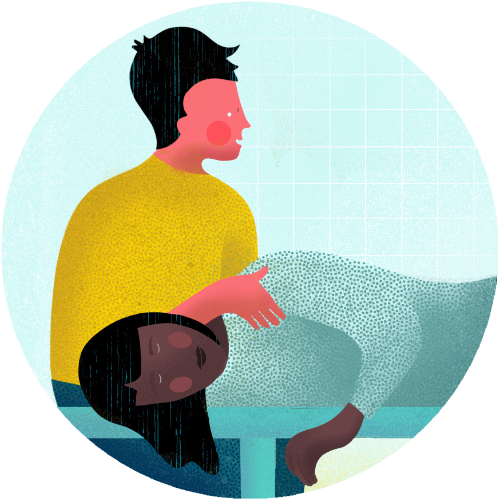Research aligned to Craniosacral Therapy
Touch is the heart of craniosacral therapy
The biodynamic cranial paradigm includes the notion of a ‘relational field’. This explains much of what people often call ‘energy’. Feeling safe with another human is transformative.
A relational field is an experience of contact that spreads over time. For example you are still in a relational field with a parent who may be dead. It is differentiated from a direct ‘perceptual field’ where you are in immediate contact with another. In a relational field your physiology and conscious experience can be directly organised around your memories, thoughts and feelings towards the other.
We don’t need ‘energy’ to understand as to why people benefit from being in a relational field with someone they feel safe with. Even over zoom. Ordinary perceptual processes are more than enough to explain why people can feel different.
Why make healing more magical than we need to?
Answers from new physics replace one mystery with another. They don’t solve real problems at the level of human psychology, the models are far too ungrounded to use in the field of trauma. Non locality and quantum fields are barely understood by anyone, their fields of action have never been shown at anything other than unimaginably small scales of action.
It takes courage to commit to developing simple skills of presence and touch as your primary tools, rather putting trust in models that cannot be clearly articulated and require extraordinary claims of special powers.
Steve Haines 1 Mar 2022
Distant healing has no place in craniosacral therapy
Craniosacral therapy is founded on skilful touch. Cranial approaches, in osteopathy and craniosacral therapy, have always been rooted in what Rollin Becker (DO) called ‘thinking-feeling-seeing-knowing fingers’.
There is some great research emerging on cerebrospinal fluid flow, movement of bones in the skull, the efficacy of craniosacral therapy and the power of interpersonal touch. The science of interoception is phenomenally interesting for the cranial field.
There is exciting philosophy on complexity, systems thinking and embodiment that really help us understand what happens in touch. There are huge insights to be gained from mindfulness, trauma and pain science.
The call of distant healing is an unwelcome distraction from presenting cranial work to a sceptical world as a simple, powerful tool that uses touch to support embodiment and health.
Body College is strongly opposed to promoting energy models as the core of craniosacral therapy. Associating with unproven, fringe practices outside of our historical framework is damaging. It dilutes the clear and robust message of safe, non-doing relational touch. We acknowledge that there are complementary skills and approaches that support craniosacral therapy, but distant healing strays too far from the essential model.
Distant healing has poor theory and no evidence. At this current stage in the development of craniosacral therapy we believe it is paramount to offer a safe, grounded paradigm based on skilful touch. We think it is important to move away from practices that rely on authority as truth, anecdotes as evidence, and only offer personal testimony as proof.
Body College firmly believes distant healing should not be included in the guidelines or curriculum of approaches taught by accredited schools in the UK (CSTA) or elsewhere.
Steve Haines 16 Apr 2021

